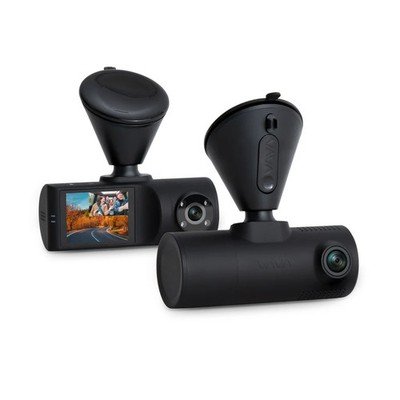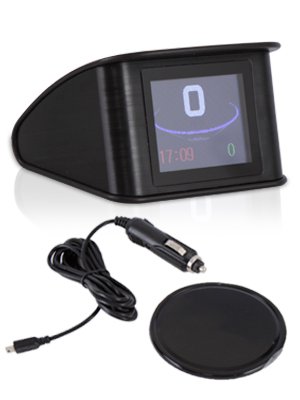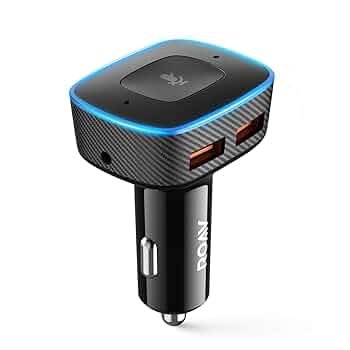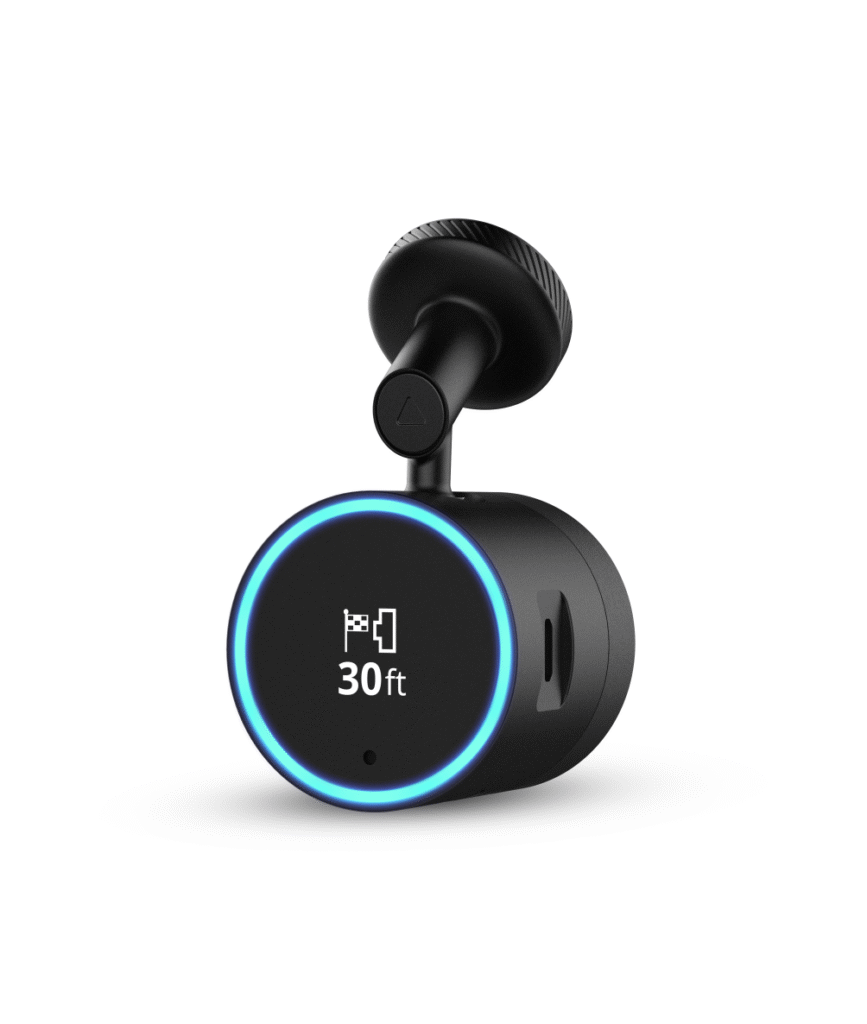Hey there, fellow gearheads and tech enthusiasts! Let’s talk about that split second. The one where you glance down at your speedometer on the highway, or check your phone’s map at a confusing intersection. In that single moment, your car travels the length of a professional basketball court, completely blind. It’s a sobering thought, isn’t it?
In our hyper-connected world, the battle for our attention has never been fiercer, and behind the wheel is the last place we can afford to lose. Our dashboards are lit up with more information than ever, but accessing it requires a constant, frantic dance between the road ahead and the gauges below. This constant refocusing isn’t just tiring; it’s a genuine safety risk.
But what if you could merge these two worlds? What if you could have your speed, navigation, and critical alerts floating transparently in your line of sight, as if by magic? This isn’t science fiction; it’s the reality of Heads-Up Displays (HUDs).
Originally developed for fighter jet pilots who need to process vast amounts of data without looking down from their targets, this incredible technology has made its way into the automotive world. A great HUD can fundamentally change your relationship with your car and the road, making every drive safer, less stressful, and, let’s be honest, significantly cooler.
In this deep dive, we’re breaking down the top 5 game-changing Heads-Up Displays available today. We’ve analyzed the tech, weighed the features, and selected the best options that will genuinely upgrade your driving experience. So, let’s shift into gear and explore how you can keep your eyes, and your focus, where they matter most.
Table of Contents
The Science of Safer Driving: Why a HUD is a Must-Have
Before we get to our top picks, it’s crucial to understand why HUDs are so effective. It’s not just about convenience; it’s about cognitive science and safety engineering.
- Drastically Reduced Distraction: The National Highway Traffic Safety Administration (NHTSA) identifies visual distraction—taking your eyes off the road—as one of the most significant risks for accidents. A HUD projects information directly into your field of view, virtually eliminating the need to look down and away. This simple change can be the difference between reacting in time and a potential collision.
- Minimized Eye Strain and Fatigue: On a long drive, your eyes are constantly refocusing between the distant road and the nearby dashboard. This process, called “focal accommodation,” leads to eye fatigue and can diminish your concentration. A HUD projects its display to a focal point further away, closer to the road itself, allowing your eyes to stay relaxed and focused for longer periods.
- Enhanced Situational Awareness: Professional drivers and pilots talk about “situational awareness”—a complete understanding of your environment and trajectory. By having your speed, RPM, and navigation data in your peripheral vision, you can process this information without consciously looking away from traffic, pedestrians, and road hazards. You’re more aware, more of the time.
- The Undeniable Cool Factor: Let’s not forget the tech appeal. A HUD adds a layer of modern sophistication to any car’s interior. It’s a functional upgrade that feels futuristic and impressive, transforming a mundane commute into a more engaging experience.
Now that you’re sold on the ‘why,’ let’s get to the ‘what.’
Our Top 5 Heads-Up Displays for a Safer Ride
We’ve selected these five HUDs to represent the best of what the market offers, from feature-packed OBD II units to smart, app-integrated devices.
1. The Versatile Performer: VAVA VA-VD009 720P HUD

For the driver who wants a comprehensive, data-rich experience without a complicated setup, the VAVA VA-VD009 is an absolute standout. It’s a true plug-and-play device that offers an incredible amount of information.
Key Features Deep Dive:
- Comprehensive OBD II Data: This unit pulls a wealth of information directly from your car’s brain (the On-Board Diagnostics port). You get more than just speed; you see engine RPM, real-time water temperature (critical for preventing overheating), battery voltage, fuel consumption, and more. It’s like having a secondary, more advanced dashboard.
- Multi-Function Display Modes: You’re not stuck with one layout. You can cycle through different interfaces to prioritize what you want to see, whether it’s a minimalist speed display or a full-on diagnostic screen.
- Adaptive Brightness Sensor: This is a crucial feature. The built-in sensor detects ambient light, making the projection bright and clear on a sunny day but dimming it down at night to avoid being a distraction or causing glare.
- Critical Safety Alarms: You can set custom audible alerts for things like exceeding a certain speed (great for avoiding tickets) or driving for too long without a break (a fantastic fatigue-fighting feature). It can also alert you to engine fault codes.
Pros & Cons:
- Pros: Extremely feature-rich for the price; clear, easy-to-read projection; simple plug-and-play installation.
- Cons: Relies on a reflective film applied to the windshield, which may not appeal to all users aesthetically.
Best For: The everyday commuter or road-tripper who wants a reliable, set-and-forget HUD that provides a ton of useful vehicle data and safety alerts.
2. The Smartphone Integration Master: Pyle PLHUD35 Universal Smartphone HUD

If your smartphone is already your co-pilot, why not fully integrate it? The Pyle PLHUD35 takes a different approach by turning your phone into the HUD, mirroring its display onto a dedicated transparent screen.
Key Features Deep Dive:
- Seamless App Mirroring: This device is essentially a high-tech cradle. It allows you to use your favorite navigation app—Waze, Google Maps, Apple Maps—and see the directions floating in front of you. This is far safer than glancing down at a phone mount.
- Adjustable and Clear Reflector: The specially coated transparent screen is designed to reflect your phone’s display clearly without creating a double image. The angle is fully adjustable for drivers of any height.
- Secure and Convenient Mount: The non-slip mat and cradle hold your phone securely, even on bumpy roads. Plus, the integrated USB charging port ensures your phone’s battery won’t die mid-trip.
- Hands-Free Capability: By pairing this with your phone’s built-in voice assistant (Siri or Google Assistant), you can get directions, change songs, and make calls without ever touching the screen.
Pros & Cons:
- Pros: Infinitely versatile, as it works with any HUD-compatible app; affordable; charges your phone simultaneously.
- Cons: Display quality is entirely dependent on your phone’s screen brightness; can be less visible in direct, bright sunlight; potential for phone overheating on hot days.
Best For: The tech-savvy driver who lives by their navigation apps and wants the most flexible and affordable way to get that information into their line of sight.
3. The Minimalist Voice Commander: Anker Roav Viva with Alexa

This one is a bit different. The Anker Roav Viva isn’t a visual HUD, but rather an auditory and cognitive one. It’s a smart car charger that brings Amazon’s Alexa into your vehicle, drastically reducing the need to physically interact with your phone or car stereo.
Key Features Deep Dive:
- Full Alexa Functionality: This isn’t a watered-down version. Ask Alexa for turn-by-turn directions, stream music from Amazon Music or Spotify, make hands-free calls, listen to audiobooks, or even control your smart home devices as you pull into the driveway.
- Superior Voice Recognition: Equipped with two powerful microphones and acoustic echo cancellation, the Roav Viva is exceptionally good at hearing your commands, even with road noise or loud music playing.
- High-Speed Charging: It doesn’t skimp on its primary function. The dual PowerIQ USB ports provide fast charging for both the driver and a passenger.
- Cognitive Load Reduction: By handling tasks via voice, it keeps your hands on the wheel and your mind focused on driving, achieving the same core safety goal as a visual HUD.
Pros & Cons:
- Pros: Excellent voice control integration; keeps you entertained and connected hands-free; high-quality charging.
- Cons: Provides no visual driving data like speed or RPM; requires a smartphone connection to function.
Best For: The driver who is already in the Amazon Alexa ecosystem and whose primary goal is to minimize physical interaction with devices while driving.
4. The Premium Safety Suite: Garmin Speak Plus with Amazon Alexa

Garmin, a titan in the navigation world, combines its expertise with the power of Alexa to create a compact device that offers both visual and auditory guidance. This is a premium safety-focused option.
Key Features Deep Dive:
- Subtle Visual Navigation: Instead of a full, cluttered display, the Garmin projects simple, crisp directional arrows and lane guidance onto your windshield. It’s minimalist and incredibly effective at showing you exactly where to go.
- Advanced Driver Alerts: This is where the Garmin truly shines. It uses a built-in camera to provide Forward Collision Warnings if you’re approaching a vehicle too quickly and Lane Departure Warnings if you start to drift, features usually found in high-end luxury cars.
- Integrated Dash Cam: The “Plus” model includes a continuously recording dash cam that automatically saves footage in the event of an incident. This provides peace of mind and can be invaluable for insurance purposes.
- Full Alexa Integration: Just like the Roav, you get the full power of Alexa for music, calls, and smart home control, all commanded by your voice.
Pros & Cons:
- Pros: All-in-one navigation, safety alert, and dash cam system; trusted Garmin navigation; clean and simple visual prompts.
- Cons: More expensive than other options; requires professional installation for a fully clean look (though DIY is possible).
Best For: The safety-conscious driver who wants proven navigation, advanced accident-avoidance features, and the security of a dash cam in one compact package.
5. The OEM-Inspired Powerhouse: Timoom Car HUD
If you love the look of a factory-installed HUD in a luxury car, the Timoom Car HUD is designed to replicate that experience. It offers a stunningly rich, multi-color display and a professional feel.
Key Features Deep Dive:
- Vibrant, Multi-Color Display: This HUD uses multiple colors to help you distinguish between different types of information at a glance. For instance, your speed might be in white, the RPM gauge might have green, yellow, and red zones, and warnings might flash in red.
- Dual-Mode Chip (OBD II + GPS): This is a huge advantage. It can pull detailed data from your car’s OBD port, but if your car is older or incompatible (like some hybrids and EVs), you can switch to GPS mode, which will provide highly accurate speed and directional data sourced from satellites.
- Deep Customization: You can fine-tune the display to show exactly what you want. It can display everything from turbo boost pressure and oil temperature on performance cars to a simple, elegant clock and compass.
- Sleek Integrated Design: The unit itself is designed to sit on your dashboard and look like it belongs there, with a built-in shade to enhance clarity.
Pros & Cons:
- Pros: Beautiful, easy-to-read color display; highly customizable; universal compatibility thanks to its dual OBD/GPS modes.
- Cons: The sheer amount of available data can be overwhelming at first and requires some setup to personalize.
Best For: The car enthusiast or tech lover who wants the most visually impressive and data-rich aftermarket HUD that closely mimics a high-end, built-in system.
Your Ultimate Buying Guide: Choosing the Right HUD
Feeling a bit overwhelmed by the options? Let’s break it down. Ask yourself these questions:
- What’s my primary goal? Is it just seeing my speed (a simple GPS HUD will do), getting navigation (a smartphone mirroring unit like the Pyle is great), or monitoring my car’s health (an OBD II unit like the VAVA or Timoom is best)?
- What’s my budget? You can get started for under $50 with simpler models, while advanced units with safety features like the Garmin can cost significantly more. Decide what you’re willing to invest in your safety and convenience.
- How important is aesthetics? Do you mind applying a small film to your windshield, or would you prefer a self-contained unit with its own screen? Consider how the device will look on your dashboard.
Frequently Asked Questions About Heads-Up Displays (HUDs)
We get it, new tech can bring up a lot of questions. Here are the answers to some of the most common queries we see about Heads-Up Displays.
Q: Will a HUD actually work in my car?
A: The odds are overwhelmingly yes! The most popular type of HUD connects to your car’s OBD II (On-Board Diagnostics II) port. By law, nearly every car sold in the United States since 1996 has one of these ports, usually located under the dashboard near the steering wheel. If you have a much older vehicle or a specific model (some electric or hybrid cars) that doesn’t have a compatible port, you can opt for a GPS-based HUD. These models draw power from a USB or 12V outlet and use satellite signals for speed, making them universally compatible.
Q: Is installing a HUD a complicated, technical process?
A: Not at all! Most aftermarket HUDs are designed for a simple, do-it-yourself “plug-and-play” installation. The process typically involves:
- Plugging the cable into your OBD II port.
- Running the cable (usually thin and easy to hide) along the weather stripping or under the dash to your desired location.
- Placing the HUD unit on your dashboard. The whole setup usually takes less than 15 minutes, with no special tools required.
Q: Are these displays legal? And won’t the display itself be distracting?
A: Yes, Heads-Up Displays are perfectly legal for use in all 50 states. It’s a common concern that the display might be a new distraction, but they are engineered to do the exact opposite. A HUD keeps information in your line of sight, so you see both the road and your data simultaneously. This is far safer than looking completely down and away at your instrument cluster. After a very short adjustment period (usually just a few minutes of driving), it feels completely natural and actually increases your focus on the road.
Q: How does the display look in very bright sunlight or at night?
A: This is a crucial feature that separates good HUDs from bad ones. All of our top picks are designed to be visible in a variety of lighting conditions. They typically include an ambient light sensor that automatically cranks up the brightness for clear visibility on a sunny day and dims it down at night to prevent distracting glare on your windshield.
Q: I wear polarized sunglasses when I drive. Will I still be able to see the display?
A: That’s an excellent and important question. The light from some HUD projections can be filtered out by polarized lenses, making the display appear dim or invisible. The effect can vary based on the specific HUD and the angle of polarization in your sunglasses. If you are a dedicated polarized sunglasses wearer, we recommend either checking user reviews for your chosen model or considering a HUD that uses its own built-in reflector screen (like the Pyle PLHUD35), as these are generally less affected.
Q: What is that little square film for the windshield? Do I have to use it?
A: That small, transparent film is included to create the sharpest possible image. Because a windshield is made of multiple layers of glass, projecting directly onto it can sometimes create a faint “double image.” The film eliminates this reflection, resulting in a single, crisp display. While you don’t have to use it (and some people find the display is fine without it), it is highly recommended for the best possible clarity.
Final Thoughts: The Road Ahead is Clear
A Heads-Up Display is far more than just another car gadget. It’s a fundamental upgrade to your driving experience and a powerful investment in your safety. By bringing critical information from your dashboard to your direct line of sight, a HUD empowers you to be a more focused, aware, and confident driver.
The seconds you save by not looking down add up, giving you more time to react, to anticipate, and to simply enjoy the drive. You’re not just buying a piece of tech; you’re buying peace of mind.
Ready to revolutionize your commute and make every trip a safer one?
Head over to MindGearMen now! We’ve got detailed reviews and the best prices on these top-rated Heads-Up Displays. Find the perfect fit for your car and start driving into the future, today!


